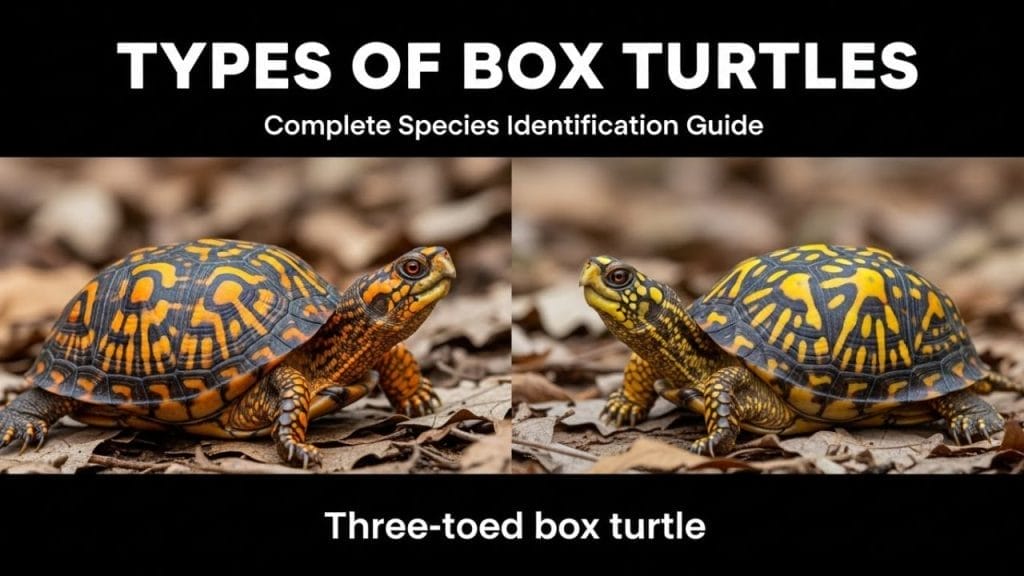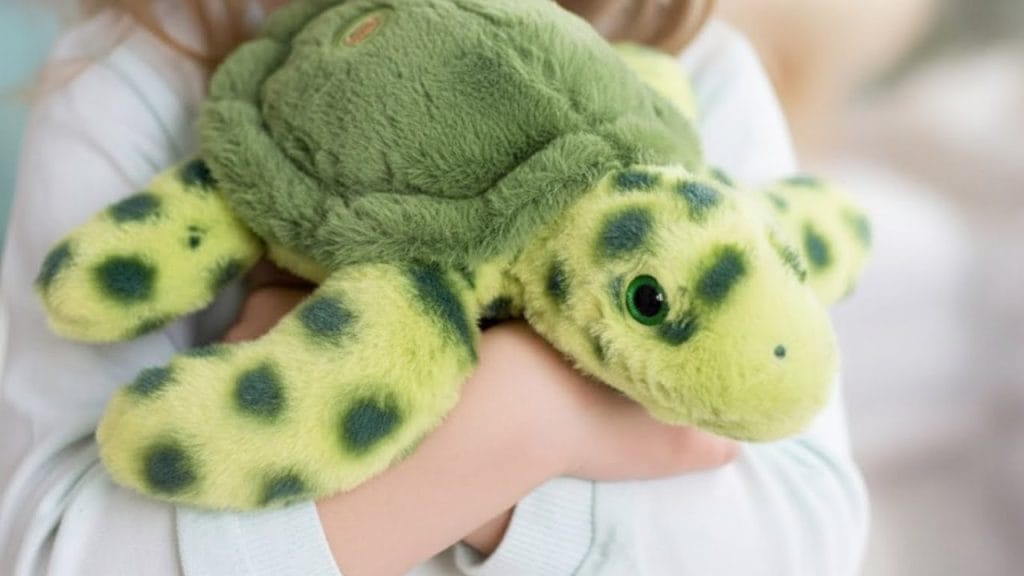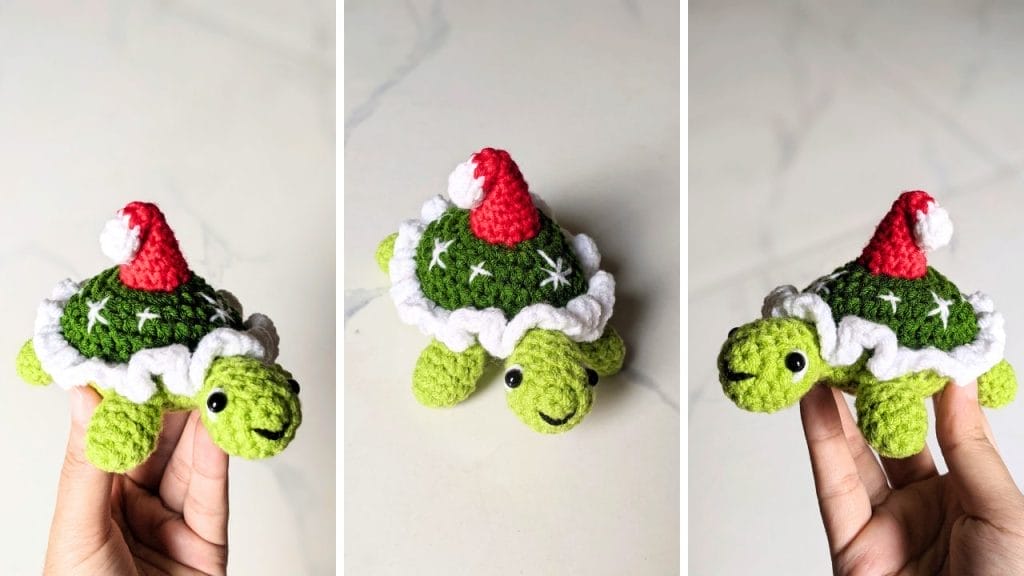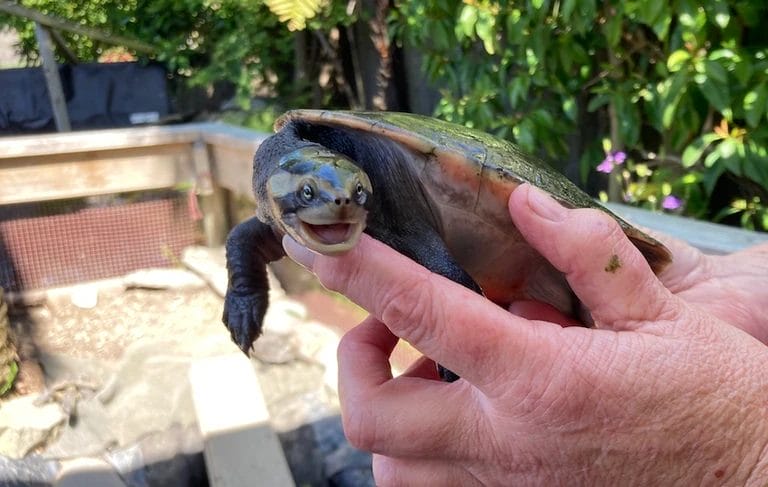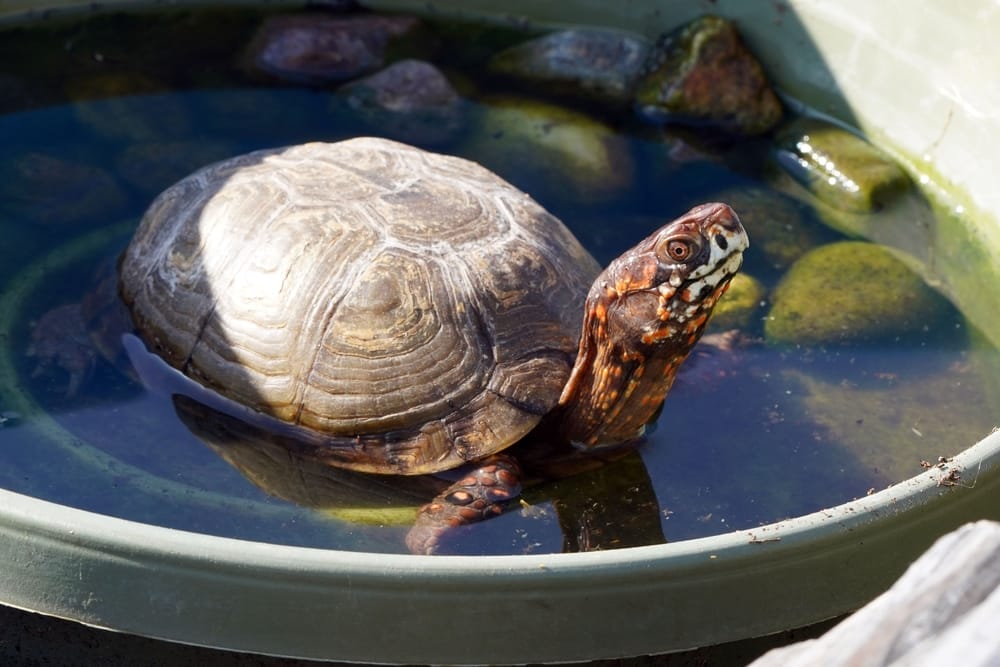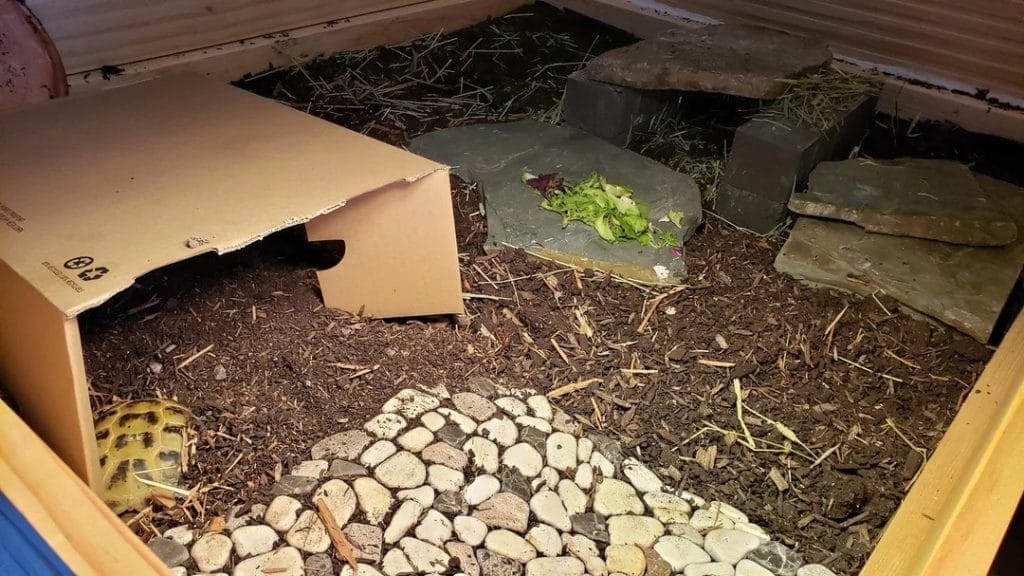How I Built a Turtle Habitat Without Spending a Dime (Well Only A Tiny Amount)
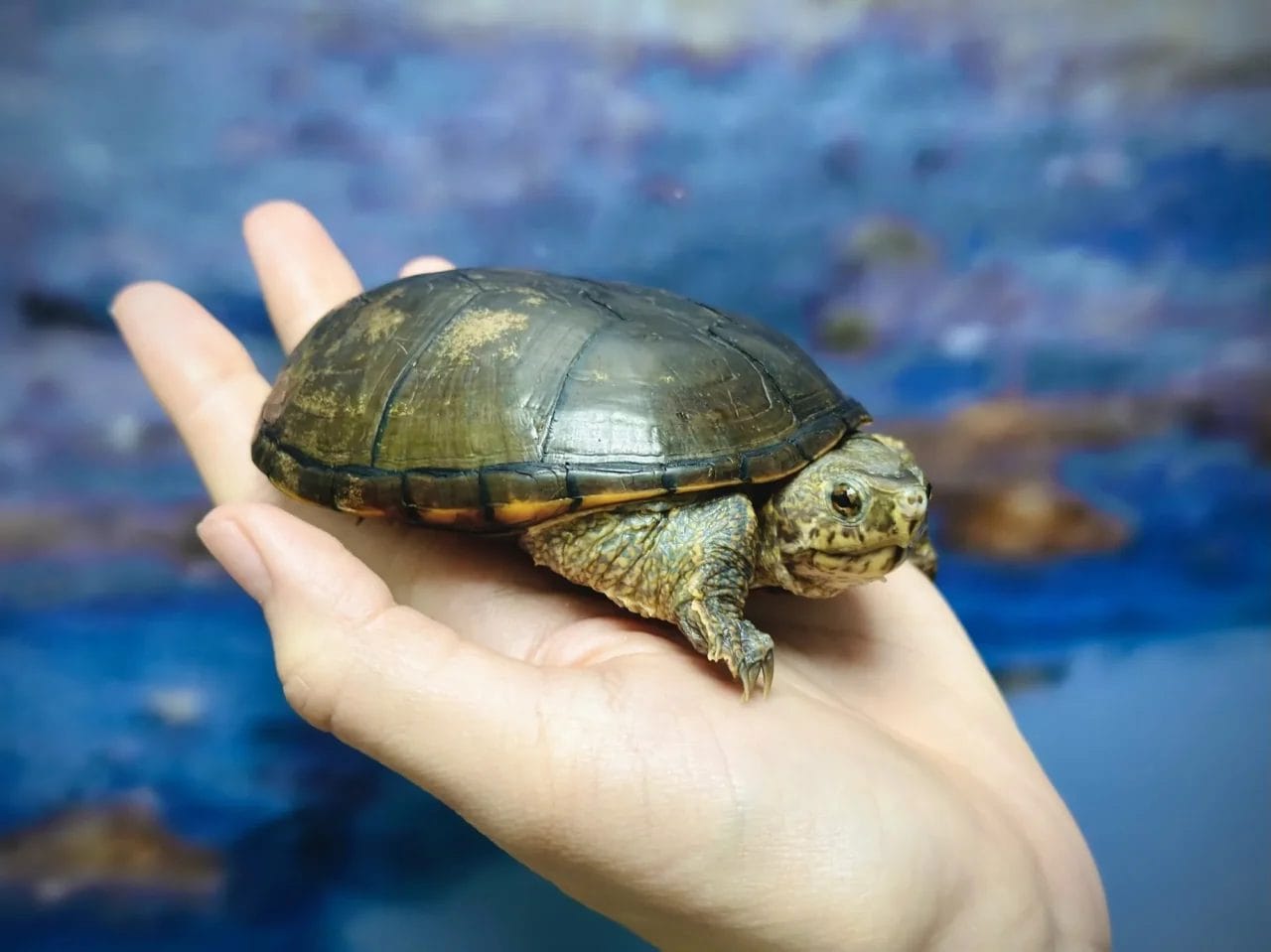
This post was created with help from AI tools and carefully reviewed by a human (Muntaseer Rahman). For more on how we use AI on this site, check out our Editorial Policy.
I had a pile of random junk sitting around—an old bin, a few flower pots, busted wood, and a cooler with questionable history.
Instead of tossing them, I turned them into a turtle paradise.
If you’re thinking of building a habitat that’s both budget-friendly and kind to the planet, I’ve got ideas for you.
No need to shop. Just scavenge smart and build something your turtle will actually use.
Know What Your Turtle Actually Wants
Before you go full DIY warrior, figure out what your turtle needs. Swimming space, dry land, basking spot, hiding places. That’s the golden combo.
Once you’ve got that in mind, it’s just a game of matching trash to function.
Not sure what your specific turtle species needs? Our ultimate guide to creating the perfect turtle tank breaks down requirements by species.
Junk Hunt Begins: Where to Look for Free Materials
Forget the hardware store. Hit your backyard, garage, neighbor’s junk pile (with permission), or local recycling center.
Look out for:
- Old bathtubs
- Storage bins
- Broken pots
- Random wood
- Plastic bottles
- Buckets
- Desk lamps
- And anything that isn’t sharp, toxic, or about to fall apart
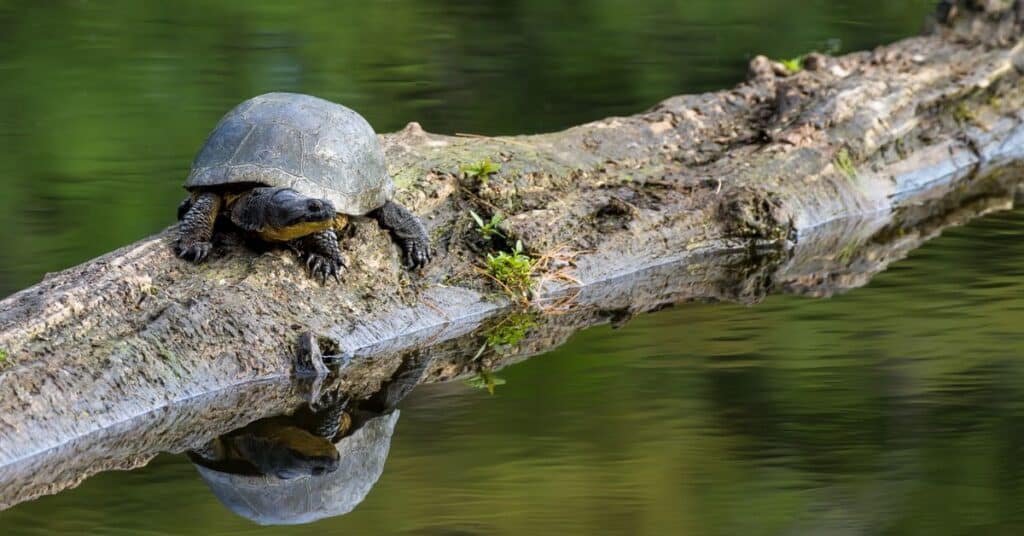
This Hilarious Turtle Book Might Know Your Pet Better Than You Do
Let’s be real—most turtle care guides feel like reading a textbook written by a sleep-deprived zookeeper.
This one’s not that.
Told from the snarky point of view of a grumpy, judgmental turtle, 21 Turtle Truths You’ll Never Read in a Care Guide is packed with sarcasm, sass, and surprisingly useful insights.
And hey—you don’t have to commit to the whole thing just yet.
Grab 2 free truths from the ebook and get a taste of what your turtle really thinks about your setup, your food choices, and that weird plastic palm tree.
It’s funny, it’s honest, and if you’ve ever owned a turtle who glares at you like you’re the problem—you’ll feel seen.
The Base: What Holds It All Together
Old bathtub? Jackpot. Just plug the drain, add water, done.
Big plastic bin? Cut some ventilation holes, divide land and water, boom—you’ve got a tank.
Keep it low to the ground or use wood pallets or bricks for support. Just make sure it’s stable and not rocking like a seesaw.
Need to divide sections? If you’ve got more than one turtle or just want to separate areas, an old mesh screen or plastic grate does the trick.
Zip-tie it in, check for gaps, and make sure nobody can get stuck trying to wiggle through.
Basking Zone: Give ‘Em a Sunny Throne
Turtles don’t just sit there—they soak up heat like pros.
Use:
- Sanded-down scrap wood
- Bricks or cinder blocks
- Even old cutting boards if you’re desperate
Make sure it’s dry, sturdy, and easy to climb. No turtle should need mountain gear to reach it.
No turtle should need mountain gear to reach it—see 28 creative turtle tank decoration ideas for more basking platform inspiration.
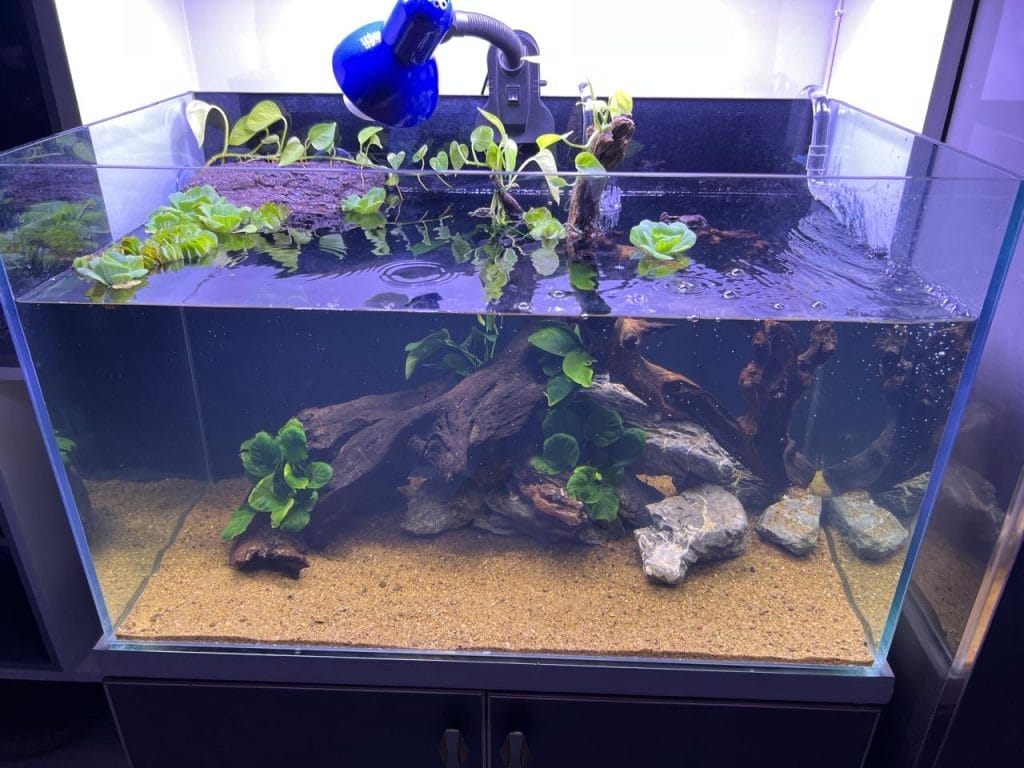
Hide-and-Seek Corners: Shady Spots for the Introverts
Turtles love hiding when they’re not busy judging you.
Try:
- Broken terracotta pots
- PVC pipe leftovers
- Hollow driftwood
If it looks like a weird cave, they’ll probably love it.
The Land: Not Just a Pile of Dirt
Use clean sand, old aquarium gravel, or dirt from your yard (if it’s pesticide-free). Add a few slopes or mini hills. Keep it interesting—flat = boring.
Toss in some plants. Bonus points if they’re turtle-safe and already growing wild near you.
The Water Pit: Make It Easy to Dive In
Cooler, sink, bucket, storage bin—if it holds water and fits the vibe, it works.
Add smooth rocks or a gentle ramp so your turtle doesn’t need a lifeguard every time it wants a dip.
Filtration: The Fun Kind of Science Project
No budget? No problem.
Make your own filter using:
- A plastic bottle
- Sponge
- A bit of tubing
- Gravity and hope
If you’ve got an old bucket, level up and make a DIY canister filter. Just make sure water’s moving and not turning into soup.
Heat and Light: Turtle Spa Time
Find an old desk lamp. Add a UVB or heat bulb (yes, buy those new). Use aluminum foil behind it to reflect heat—but don’t go wild. Foil gets hot fast.
Just keep wires safe and dry unless you want your turtle to have a shocking experience.
For detailed guidance on proper lighting setup, check out turtle basking lights 101: the simple setup every beginner needs.

Bonus Flair: Turn Trash Into Art
Got old toys? Turn ‘em into statues. Driftwood? Clean it, boil it, and toss it in—it makes the whole place look wild in the best way.
Old plastic containers? Cut and sand them into tunnels, bridges, or little hidey-holes. Just make sure everything’s safe—no sharp edges, no flaking paint, and definitely no weird smells.
Don’t go overboard. You’re building a turtle habitat, not a cluttered craft shelf.
Watch, Adjust, Repeat
Once your turtle moves in, observe like a weirdo. Do they bask? Do they hide? Are they plotting revenge?
Tweak things. Shift stuff around. Make it better as you go.
Final Touches That Actually Matter
- Add plants. Real or fake (but safe).
- Don’t forget smooth stones, not sharp rubble.
- Keep the layout open, not crowded.
- Make cleaning easy. Think like a lazy future-you.
One Last Thing…
Take a picture when you’re done. Not just for bragging rights, but to inspire others.
You just turned trash into a turtle kingdom. That deserves a share.

About Author
Muntaseer Rahman started keeping pet turtles back in 2013. He also owns the largest Turtle & Tortoise Facebook community in Bangladesh. These days he is mostly active on Facebook.


